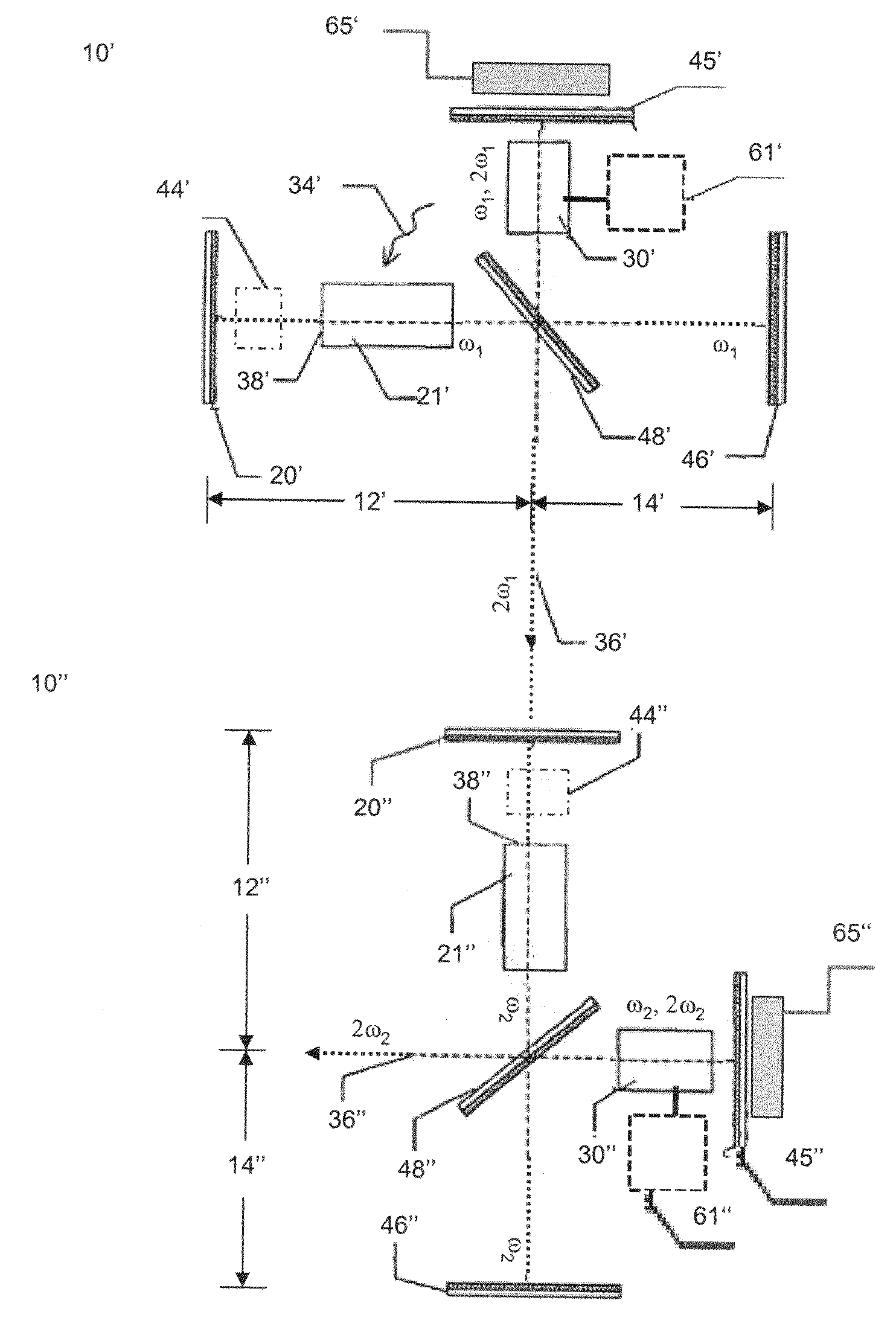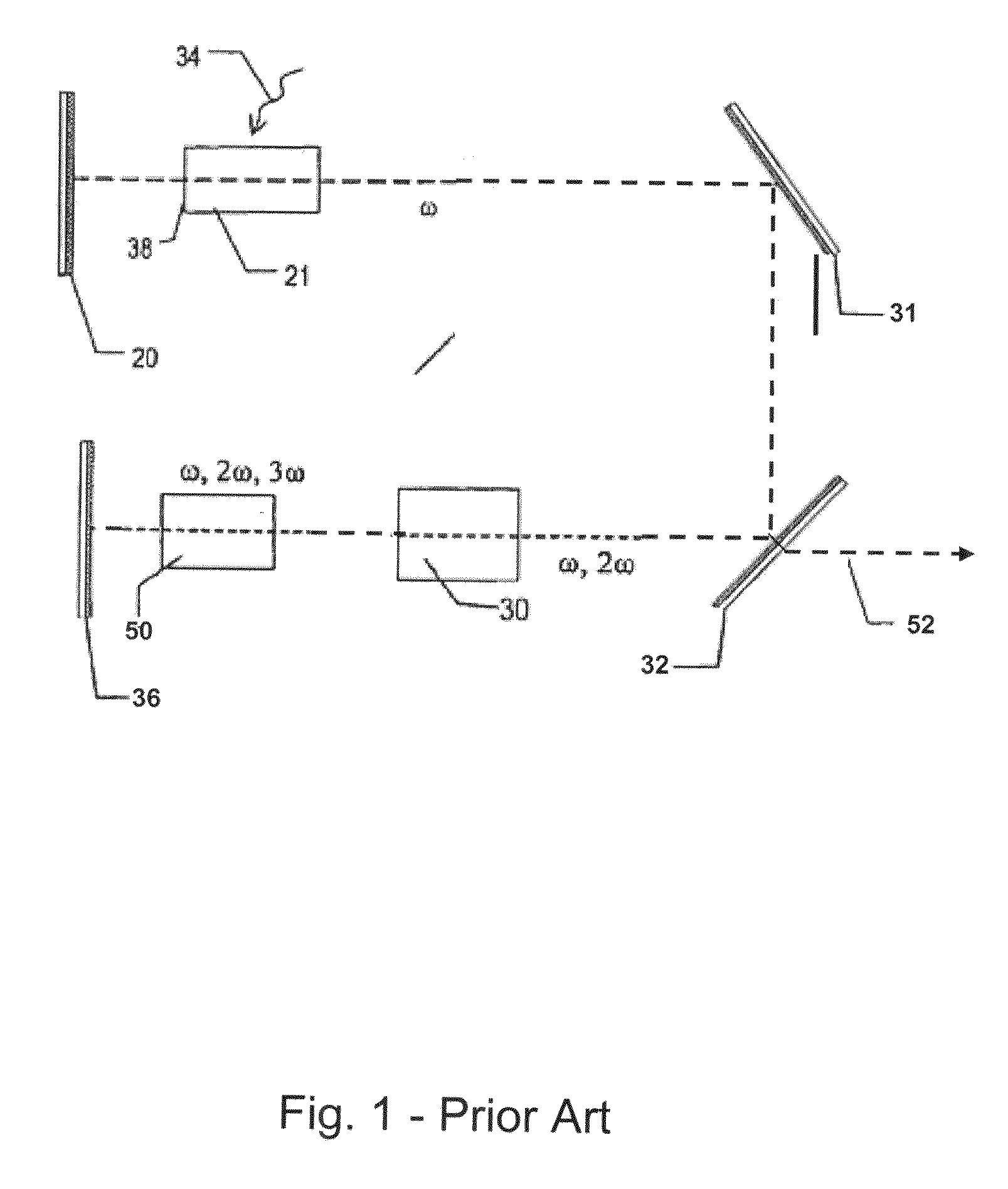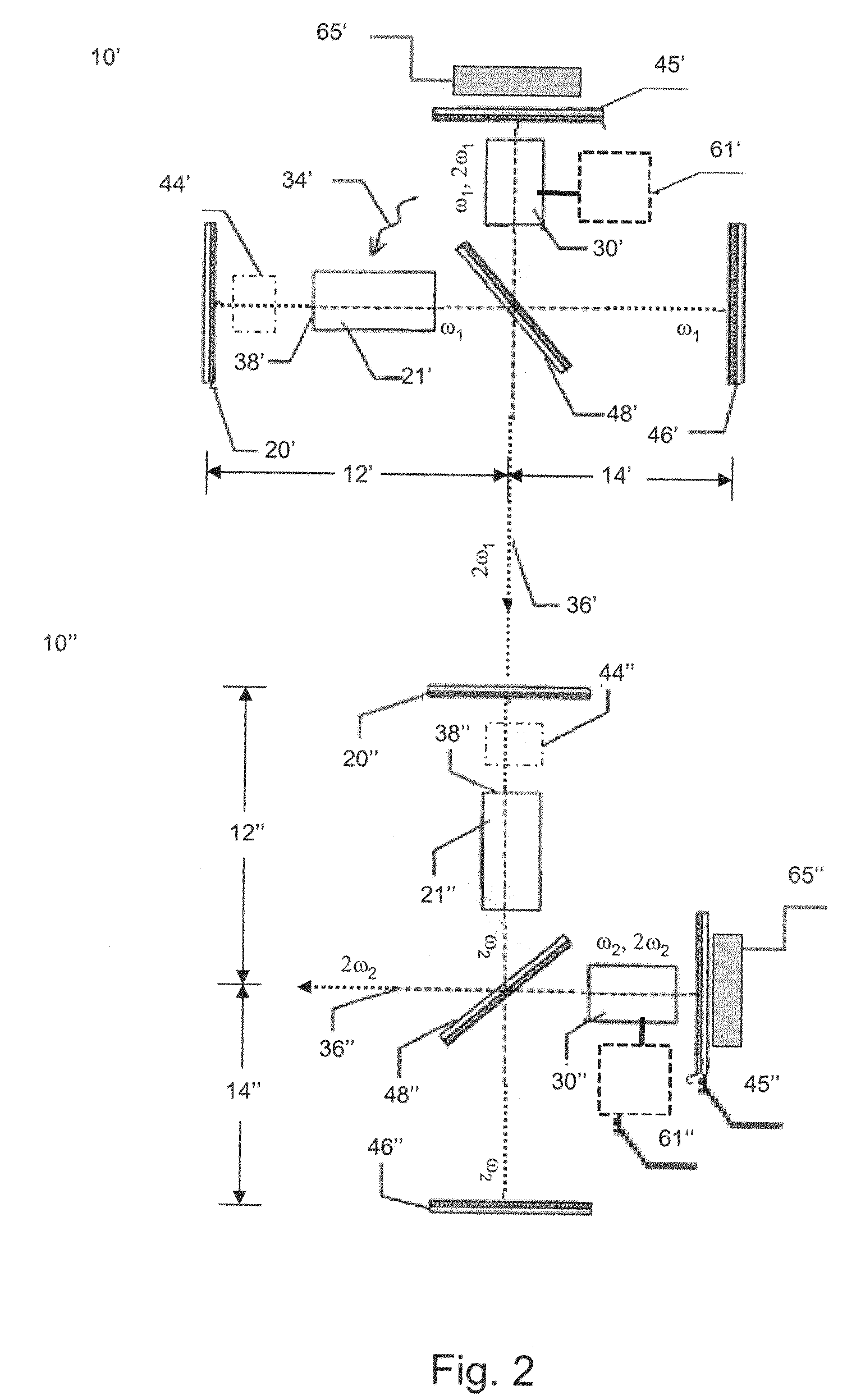UV light generation by frequency conversion of radiation of a ruby laser pumped with a second harmonic of a solid-state laser
a solid-state laser and laser technology, applied in laser arrangements, laser details, electrical equipment, etc., can solve the problems of low overall system efficiency (third harmonic output with respect to the pump power applied to the laser), low overall system efficiency, and high sensitivity of the laser output. , to achieve the effect of high gain and lower efficiency
- Summary
- Abstract
- Description
- Claims
- Application Information
AI Technical Summary
Benefits of technology
Problems solved by technology
Method used
Image
Examples
Embodiment Construction
[0024]Generally, the system and method described herein utilize the advantageous features of using a neodymium-doped active laser medium of a first complex laser cavity to pump a ruby based active medium of a second complex laser cavity to produce a laser beam at about 350 nm.
[0025]FIG. 2 shows an embodiment of a laser system including a first complex laser cavity 10′ output 36′ from which is used to pump an active laser medium 21″ in a second complex laser cavity 10″ to produce a laser beam 36″ at about 350 nm. The first complex laser cavity 10′ includes a first cavity part 12′ of lower level circulating first fundamental frequency (ω1) power and a second cavity part 14′ of higher level circulating first fundamental frequency power (ω1). The first cavity part 12′ includes a cavity back mirror 20′, and a neodymium-doped active medium 21′, and a beam splitter mirror 48′. The second cavity part 14′ includes the beam splitter mirror 48′, a non-linear crystal 30′, and two cavity end mir...
PUM
 Login to View More
Login to View More Abstract
Description
Claims
Application Information
 Login to View More
Login to View More - R&D
- Intellectual Property
- Life Sciences
- Materials
- Tech Scout
- Unparalleled Data Quality
- Higher Quality Content
- 60% Fewer Hallucinations
Browse by: Latest US Patents, China's latest patents, Technical Efficacy Thesaurus, Application Domain, Technology Topic, Popular Technical Reports.
© 2025 PatSnap. All rights reserved.Legal|Privacy policy|Modern Slavery Act Transparency Statement|Sitemap|About US| Contact US: help@patsnap.com



